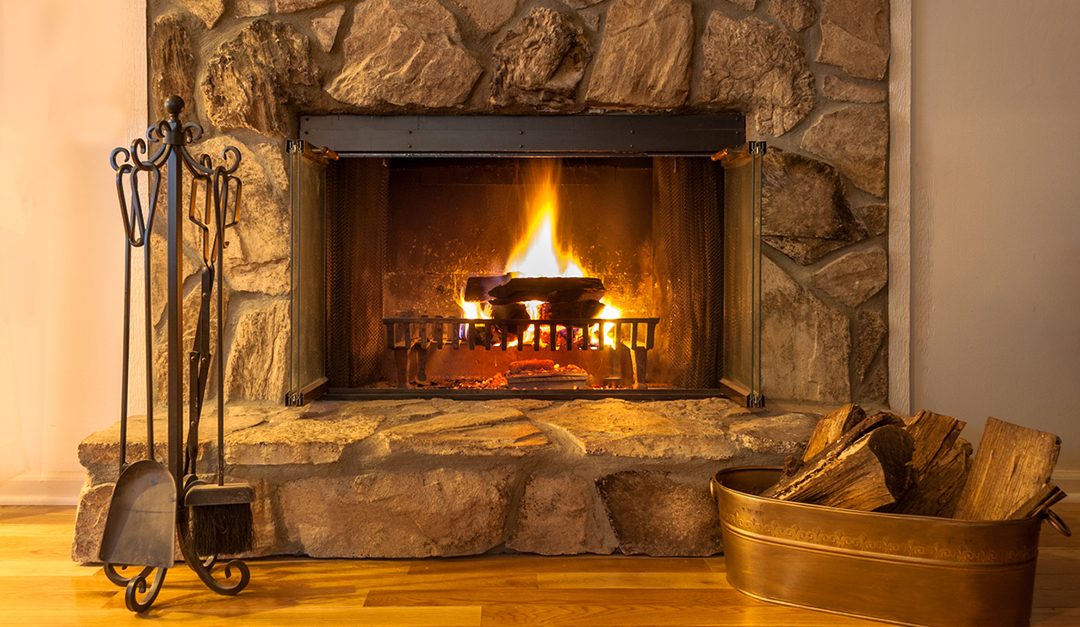Winter is almost here and that means you can put that wood-burning fireplace to use! Fires are a great way to unwind and stay warm throughout the season, but there are certain safety precautions and maintenance you should be aware of. Keep these in mind before you light up those logs and rest by the cozy flames.
The most obvious safety concern is fire prevention, but carbon monoxide poisoning is another issue to keep on your radar. Never close your damper with hot ashes still in the fireplace. The damper sends smoke out through your chimney, which prevents carbon monoxide from becoming trapped in your home and poisoning you. The damper also acts as a seal to prevent cold air from coming into your house when your fireplace isn’t being used. You’ll want to be sure to remove all ashes from the fire and let them cool or pour water over them before disposing.
When building your fire don’t use flammable liquids, such as lighter fluid, to start it. Paper isn’t safe to start a fire inside either. Don’t burn plastic or wood that has been treated with chemicals or paint—this could cause corrosion to the flue. Instead, use natural, dry wood. If an accidental fire does break out, make sure you have a fire extinguisher handy. Place smoke and carbon monoxide detectors on the same floor as your fireplace and do periodic checks to ensure their functionality.
Investing in a chimney cap is a smart move. It prevents water damage and animal nesting, and blocks debris from getting into your chimney. A spark arrestor is another safety measure to look into. Its mesh material is used to prevent sparks from flying out of your chimney, potentially causing a fire on your roof or lawn. Usually the two are sold together as one unit.
If you use your fireplace a lot during the colder months, you’ll want to clear decor around the area. Always use a screen while the fire is lit so small embers don’t fly out, and even then, consider putting a nonflammable rug in front of the fireplace to protect your carpet. Be sure to monitor and maintain the fire throughout the night.
The major maintenance you’ll need done on your fireplace is a chimney sweep. This is to clean the soot and creosote that builds up in your chimney from burning all that wood. Deep cleaning the chimney can help prevent carbon monoxide poisoning, fires and a clogged flue, which can cause smoke to backup and enter your home. The cleaning also improves energy efficiency and the need for long-term repairs if you keep up with it. It’s recommended to have your chimney professionally cleaned once a year. You can do it yourself, but there are financial costs for equipment and safety issues to be concerned with. You may also want to consider a chimney inspection about once a year, or after 80 uses.
Gaps can form in the brick mortar from heat constantly expanding and contracting within your fireplace. Flames can escape through the cracks and burn up the structure of your house. Check the bricks regularly and recalk as necessary.
Other maintenance include cleaning the firebox and hearth after use—sweep away ash and scoop up debris. You’ll want to clean the fireplace’s doors too. Scrape buildup off and cleanse the surface with warm soapy water.
Fireplaces are a luxury. And if you’re lucky enough to have one, take care of it! They require maintenance, but your work will be worthwhile when you see your fireplace lasting over the years.
For more information, please visit, www.HomeTeam.com.




